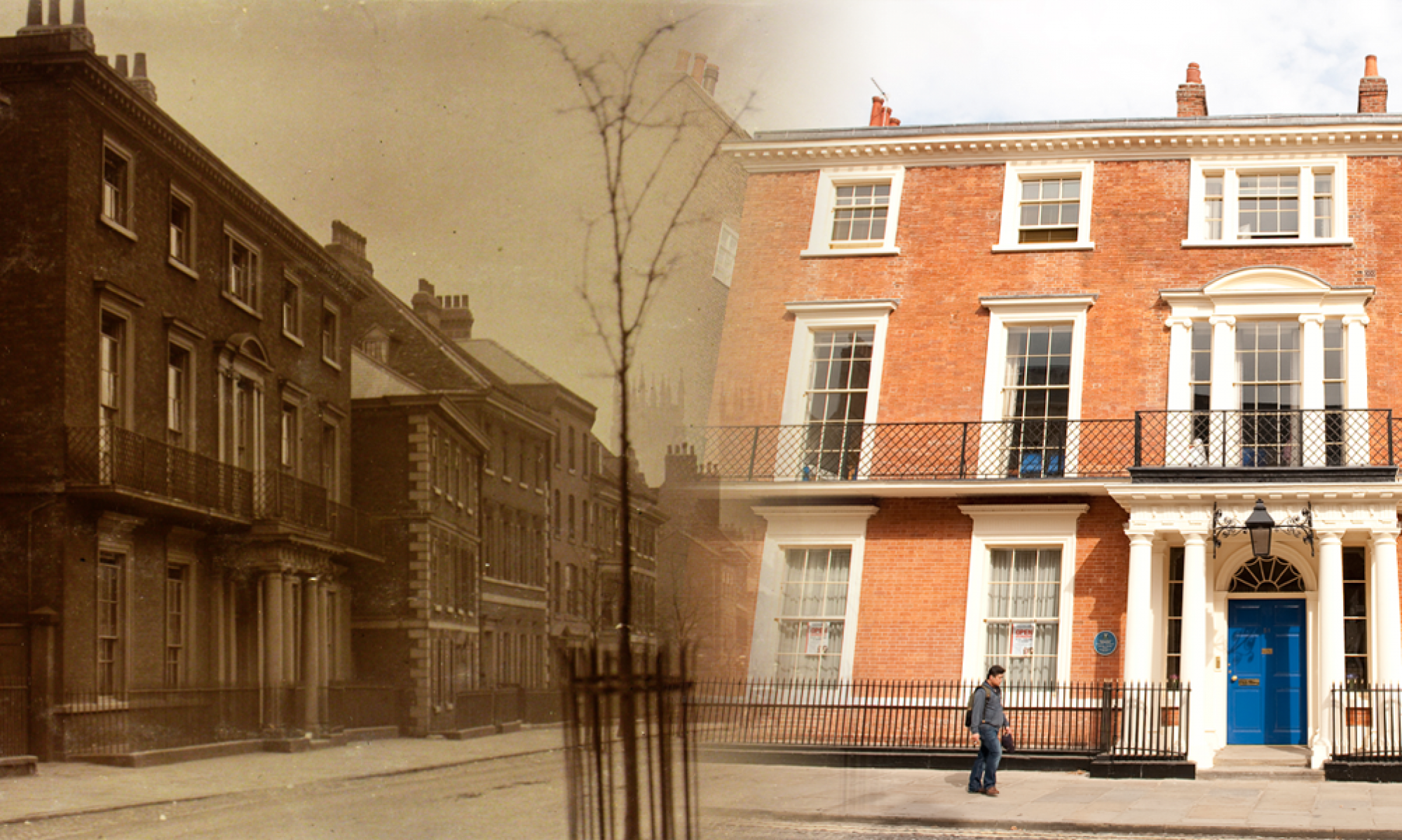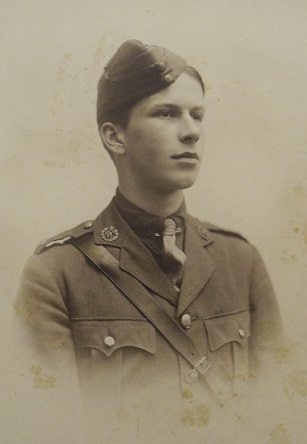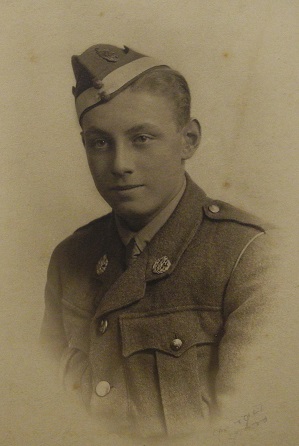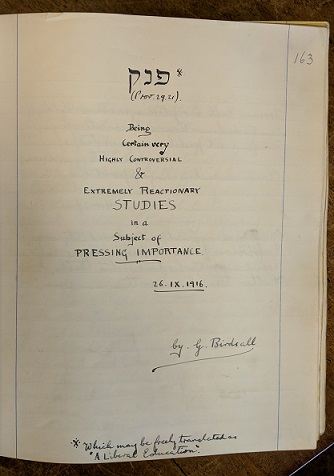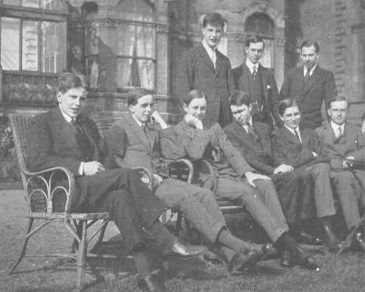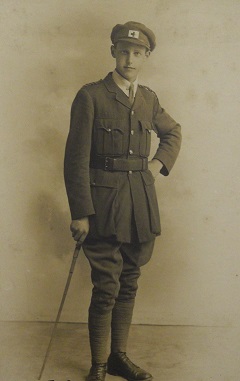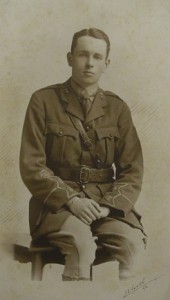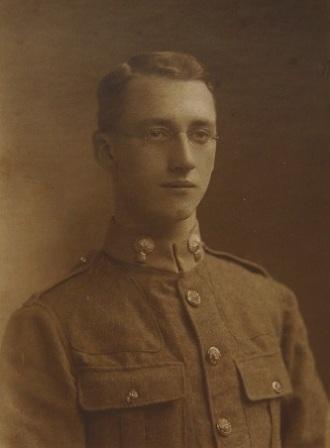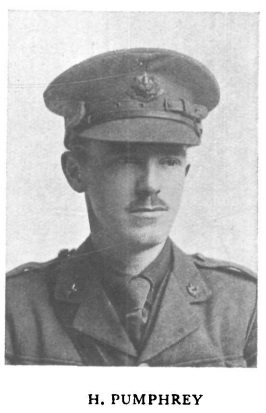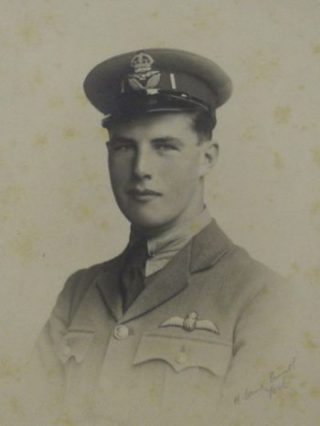
Robert Ian Alexander Hickes, of Market Weighton, was killed in action in France on 30th August, 1918, aged 19 years.
He was born on 12th January 1899 and attended Bootham School from 1914 to 1917.
Ian joined Lower Senior class in the Spring of 1914. He joined the Microscopy section of the school Natural History, Literary & Polytechnic Society.
The school magazine, “Bootham”, of March 1915 reports that he won a prize for microscopy. He had prepared a set of micro-preparations of crystals. He also won a prize for his Natural History diary.
“Bootham” of December 1915 reports that:
“Matriculation results were announced late in the term; sixteen had passed, Braithwaite getting honours with distinctions in five subjects and Hickes honours with three distinctions.”
“EXAMINATION RESULTS.
UNIVERSITY OF LONDON.
SENIOR SCHOOL : MATRICULATION STANDARD.
Honours.
R. B. Braithwaite, e, em, c, I, f.
R. I. A. Hickes, em, me, c.
Distinctions : e = distinction in English, h in History, m in Mathematics, em in Elementary Mathematics, me in Mechanics, c in Chemistry, Theoretical and Practical, I in Latin, g in Greek, f in French.”
Also
“It has been decided to continue the Ambulance Drill again this year, and with the experience of those who have already gained the certificate to command us we have quickly passed the more elementary stages, and hope to be working with a motor ambulance next term. One afternoon a week is devoted to it, and on the last Tuesday of November we were inspected by a sergeant of the St. John Ambulance Association, who expressed himself highly satisfied with the work that was done. Section eight, under the command of Hickes, was placed first with twenty-six out of thirty, but as the lowest was only twenty-two there was very little to choose between them.”
“Bootham” of March 1916, in the report of School Term Autumn 1915, gives an account of the Charades.
“We had expected much, and were not disappointed. The cast was not so large as on previous occasions, and therefore it was more select, all adapting themselves to their parts as though to the manner born. The scenes were taken from selected parts of “Our Mutual Friend,'”‘ and the intervals were enlivened by selections from Mrs. Sparkes and her trio of violinists. “Comparisons are odious,” says the old proverb, and in this case indeed almost impossible—all were so good; but Hickes, as the amorous though not very intellectual Sampson, we must confess surprised us, and we would like to congratulate him on the amusement which his part afforded.”
In 1916, Ian Hickes was curator of Microscopy at the school, and later a curator of Meteorology.
Moving on to October 1916, “Bootham” reports:
“University of London, First Examination for Medical Degrees.
R. V. Brown.
R. I. A. Hickes.”
Then in the June 1917 issue of “Bootham” we read:
“Football Notes, by the Captain.
HICKES, R. I. A.—A useful back who has got through a great deal of work. Always playing a strong game, he has usually been successful in breaking up the attack of his opponents. Good with his head.”
In “Bootham” of December 1917 we have the Report of Summer Term 1917.
“Mr. Arnold Rowntree very kindly gave away the prizes to those who were leaving. This was the first presentation under the new scheme by which all money won is accumulated and one prize bought at the end of the time at school. A certificate was given with each stating for what achievements it had been won. We were all glad to have Arnold Rowntree with us on this occasion and to feel from his words of appreciation his keen interest in all our doings. At the close we heard that the Commemoration Scholarship had been divided between R. I. A. Hickes and J. R. B. Moulsdale.”
“Examination Results.
MIDSUMMER, 1917.
Bootham School Commemoration Scholarship.
R. I. A. Hickes.
J. R. B. Moulsdale.
University of London: Intermediate Science Examination
R. I. A. Hickes, 3rd Class Honours in Chemistry.”
His Bene Decessit entry in this issue of “Bootham” reads as follows;
“R. I. A. HICKES played right-back for the 1st XI. and obtained the 1st Boys’ Colours. He was a keen meteorologist and also took a large amount of interest in the Lads’ Club in York and in the Bootham School Camp. Hickes passed matric. with honours two years ago. During his two years in the College he obtained his 1st M.B. and also passed Intermediate Science of London University with 3rd Class Honours in Chemistry. He was a reeve and shares the Commemoration Scholarship with Moulsdale.”
In “Across the Months” from this same issue we read:
“R. IAN A. HICKES (1914-17) is a Cadet in the R.F.C. Cadet Wing, *****. He joined up at *****, and had rather a thin time to begin with. “The training in this wing is a course of five weeks’ instruction in drill, machinegunnery, signalling, military law, map reading, etc. I was pleased to hear of so many medicals once more. It is a pity if such a privilege is not used to the fullest extent. I had hoped to come and see you at Old Scholars. Indeed, there was talk of a victual in Abbatt’s study, and Billy Barber wanted me to play, but no leave is given at this stage. “”
“Bootham” of May 1918 contains the “O.Y.S. War-time Service Lists, including the following:
“Old York Scholars serving in the Navy and Army
Hickes, R. I. A., Sec. Lieut., R.F.C.”
“Bootham” of July 1918 has the Report of Old York Scholars’ Association. Whitsuntide meeting of 1918 at Jordans.
“ROGER DARBY, who has taken up the work of the Scholarship Fund, said that the report was quite satisfactory. The scholarship had been divided between Ian Hickes and John Moulsdale, but neither was yet able to use any of it because they were going into the Army.”
On 30th August 1918 Ian was the pilot of a bomber plane shot down over occupied France. He and his navigator both died and were buried in a small village cemetery there.
The December 1918 issue of “Bootham” reports, under “Deaths”:
“HICKES.—On 30th August, 1918, killed in the air over France, Robert Ian Alexander Hickes, of Market Weighton (1914-17), aged 19.”
His “In Memoriam” is in the April 1919 issue of “Bootham”:
“ROBERT IAN ALEXANDER HICKES (1914-17). Hickes will always be associated in my mind with his two predominant qualities—an infinite capacity for hard work, and a strongly developed sense of duty. Unlike us weaker mortals, he would never leave a chemical analysis unfinished nor a mathematical problem unsolved, and when at some hard piece of work he was quite unapproachable in every sense of the word; I have never seen anyone else so barricaded in by note- and text-books. His conscientiousness gave him an almost oppressive sense of responsibility and dignity during his year as a Reeve. It was largely his sense of duty that made him during this period throw himself so wholeheartedly into the Lads’ Club, and into encouraging younger members of the N.H. Club in botany and microscopy.
No mention of Hickes would be complete without reference to his histrionic talent. For two years the “charades” might be truthfully said to be Hickes. In 1915 his rendering of the speechless rustic a-courting in Our Mutual Friend was more widely imitated among the lesser fry than anything else in my experience; whilst his Sir Anthony Absolute of the following year, although a little heavy, was easily the chef d’oeuvre of the evening.
Hickes may be summed up as a clever Yorkshireman : his mentality was North Country, not quick, but very sound; and his soul was true Yorkshire. He well deserved the Commemoration Scholarship awarded him. R. B. B.”
Second Lieutenant Robert Ian Alexander Hickes is buried at Latour-en-Woevre Communal Cemetery, France.
